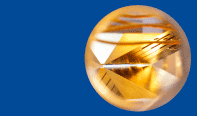
Trapping of Topological-Structural Defects in Coulomb Crystals
"Entering the quantum regime for large Coulomb crystals and 2D structures by exploiting the kinks’ localized properties
is another step" [Phys. Rev. Lett. 110, 133004 (2013)].
We presented extended 2D and a new class of
quasi-3D defects, both are formed spontaneously during crystallization of ion clouds. Such defects are observed to be stable and similar discrete solitons (kinks) can become topologically protected.
 |
- studying Coulomb crystals containing up to 50 ions
- fluorescence images
of crystals obtained for identical experimental parameters: featuring pure zigzag configuration or defects
- molecular-dynamics simulations agree well with observations
- simulations give insights into the kink eigen modes (incl. frequency, amplitude, and principle axes)
|
- kinks are subject to an effective potential
- this effective potential is a function of the number of constituent ions and the kink position within the crystal
- self-trapping effect pushes kinks from the edges to the center of the crystal
|
 |
